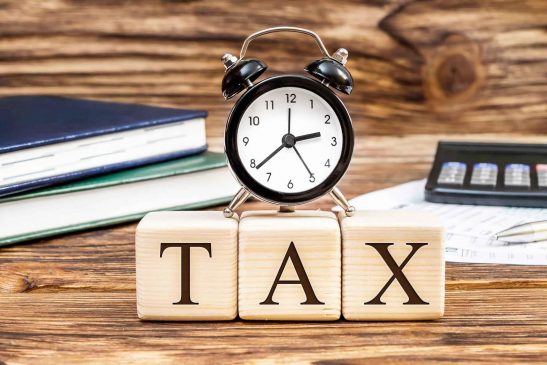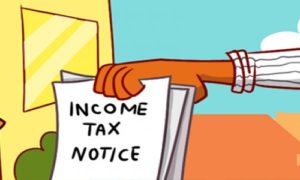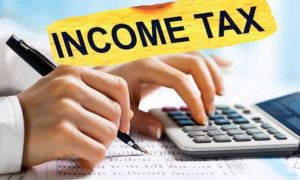The Central Board of Direct Taxes (CBDT) on August 30 rolled out its e-Dispute Resolution Scheme, by detailing the process to be followed by taxpayers to file applications under this framework.
Read More:- Nitin Gadkari Asks State FM’s To Consider GST Cut On Flex-fuel Vehicles To 12%
Earlier in 2022, the income tax (I-T) department had notified this scheme under Section 245MA of the Income Tax (I-T) Act, 1961, to reduce tax litigation and disputes. “The e-Dispute Resolution Scheme was notified in 2022 itself. Now, CBDT has enabled the process of electronic filing of the applicable online application in prescribed form 34BC, through the income tax e-filing portal,” said Mayank Mohanka, Founder-Director, TaxAaram.com
Who is eligible to seek dispute resolution under this process?
Under this scheme, a taxpayer whose income as per income tax returns (ITR) for the relevant assessment year is up to Rs 50 lakh and the aggregate amount of variation (addition/disallowance of deductions) is less than Rs 10 lakh can file an application. “Anybody, including salaried taxpayers who meet the criteria listed can file applications under this scheme. For example, salaried taxpayers, whose returned income is up to Rs 50 lakh and who are in receipt of assessment orders, wherein disallowances in respect of their HRA [house rent allowance] claims or other Section 80C deduction claims have been made up to Rs 10 lakh, can consider settling their tax disputes under this scheme, in order to avoid probable levy of penalty under Section 270A in respect of under-reporting or mis-reporting of their income, ” said Mohanka.
Read More: CBDT’s Dispute Resolution Scheme: Know how you can approach e-DRC to resolve your tax disputes
Then, there are certain other criteria too. For instance, the taxpayers should not be facing detention under the Conservation of Foreign Exchange and Prevention of Smuggling Activities Act, 1974. However, such restriction will not apply if, say, the order has been set aside by a court, among other things.
Also, the taxpayer will be considered ineligible if he has been convicted of, or even if prosecution has been instituted against him, any offence punishable under Acts such as Unlawful Activities (Prevention) Act, 1967, Narcotic Drugs and Psychotropic Substances Act, 1985, Prohibition of Benami Transactions Act, 1988, Prevention of Corruption Act, 1988 (49 of 1988) and Prevention of Money Laundering Act, 2002.
“This is an option given to taxpayers. Alternatively, they can also use the regular mechanism — filing appeals — or send in applications under the Vivaad se Vishwaas scheme, if they are eligible,” said Mohanka.
Read More: GST Collection In August Jumps 10% To Rs 1.74 Lakh Crore, Check Details
What are the advantages over the regular process of appealing against I-T demands and notices?
It is a simpler process that could work to taxpayers’ advantage.
“Under the scheme, the principal income tax and any interest due needs to be paid but corresponding penalty (such as 100 per cent under Section 270A for under-reporting of income and 200 percent for misreporting of income) due can be waived off or reduced by the Dispute Resolution Committee,” said Mohanka. According to him, this is also an amnesty scheme on the lines of Vivaad se Vishwaas, but there is no cut-off date for admissible cases. “The differentiating factor here is that while penalty or prosecution can be waived off under this scheme, there is no provision for waiver of applicable interest (on tax demand due),” he added.
According to the frequently asked questions (FAQs) released by the tax department, taxpayers should approach e-DRC (dispute resolution committee), which has the power to grant immunity from prosecution, and waive off or reduce penalty, after the payment of taxes. The objective is to facilitate quicker resolutions for such cases – the e-dispute resolution committee has to pass orders within six months from the end of the month in which the application was admitted.
Read More: September 2024 Income Tax Due Dates: Check Complete List Here
CBDT has constituted dispute resolution committees in all 18 jurisdictional regions across the country. The list of such DRCs along with their e-mail addresses is available on the official e-filing portal.
What is the process to be followed under e-DRS?
You can access e-DRS module by logging on to income tax portal (incometax.gov.in) using your permanent account number (PAN), which acts as your user identity (ID). Next, go to the dashboard -> e-File -> income tax forms -> File income tax forms. Under the tab, ‘Persons not dependent on any source of Income (Source of Income not relevant)’, go to ‘Dispute resolution committee in certain cases (Form 34BC). Fill up the form -> Review the details -> e-verify the 34BC using Aadhaar one time password (OTP), electronic verification code (EVC) or digital signature certificate (DSC) to complete the process at your end.
Read More:- How To File Belated ITR For FY24? Know Deadline, Penalty and Other Details
What are the timelines to be borne in mind?
You need to complete the process within one month of having received the I-T department order against you. In cases where appeal has already been filed and is pending before the commissioner of I-T (Appeals), you must file your e-DRS application on or before September 30. “In cases where the specified order has been passed on or before August 31, 2024 and the time for filing appeal against such order before CIT(A) has not lapsed, the application can be filed on or before September 30, 2024,” said Amit Maheshwari, Managing Partner, AKM Global, while explaining the scheme rules.





































